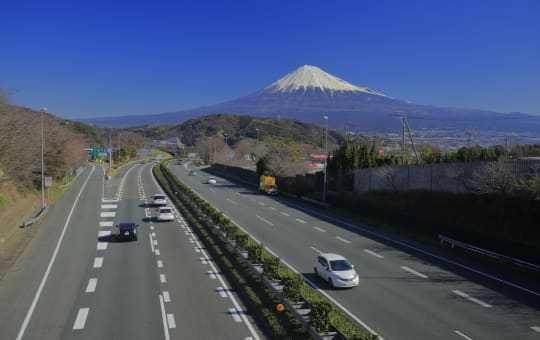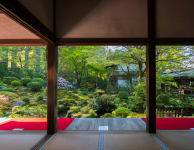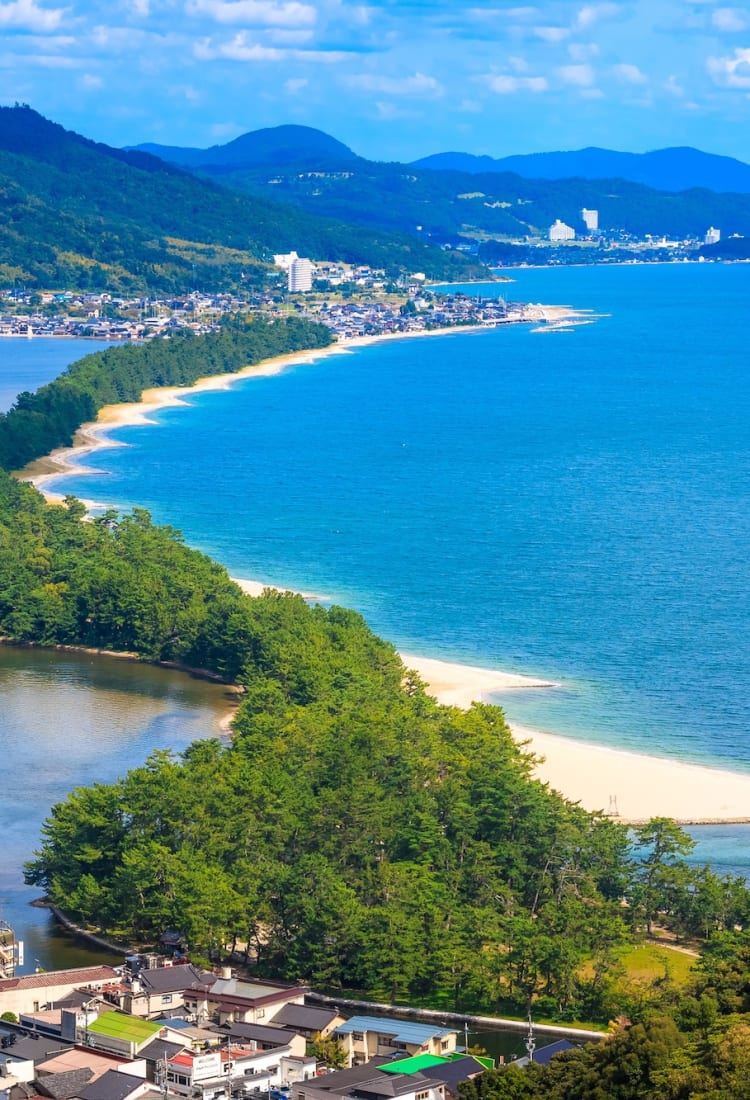

KYOTO Another Kyoto Dive Deeper into the Heart of Tradition: Explore Kyoto’s Hidden Treasures
Get off the beaten track and explore some of Kyoto's lesser-known destinations
Kyoto , the ancient capital city of Japan, is well known around the world for its historic streets, ancient temples and cultural traditions. Kyoto's culture was created by bringing together different materials and techniques from the surrounding environments. For example, vegetables used in Kyoto cuisine are procured from forests like Kameoka City, while the tea leaves used to make the city's famous green tea and matcha are grown in southern Kyoto, and is a specialty of areas like Uji City and Wazuka Town. Travelers to Japan looking to experience the profound charm of Kyoto will want to explore the four areas we've listed as “Another Kyoto” – Kyoto by the Sea, Woodland Kyoto, Kyoto Tea Country and Kyoto Otokuni Bamboo Grove.
Don't Miss
- Take a leisurely stroll along the Sea of Japan on Amanohashidate's pine forest and sandbar in Miyazu Bay and experience Kyoto by the sea
- Embark on a riverboat ride down the Hozu River in Kameoka City
- Deepen your appreciation for Japanese tea and savor matcha in many forms in Uji City
- Enjoy an idyllic walk amongst the bamboo trees in Muko City
How to Get There
Travelers looking to explore Kyoto by the Sea can start their journey at Amanohashidate Station, which is about 130 minutes away from Kyoto Station. For those looking to visit the Ine Boathouses, visitors can take the bus from Amanohashidate Station straight to Ine.
Visitors can get to the heart of Woodland Kyoto via Kameoka Station, located about 20 minutes away from JR Kyoto Station on the local train via the JR Sagano (San'in) Line.
Kyoto Tea Country can be accessed via Uji Station. The easiest way to get to Uji Station is to take a train on the JR Nara Line from JR Kyoto Station to Uji, which is about 20 minutes away.
The Kyoto Otokuni Bamboo Grove region can be easily accessed via Higashimuko Station, which is about 30 minutes away from Kyoto Station via the Karasuma Line and the Hankyu-Kyoto Line semi-express.
Kyoto by the Sea
“Kyoto by the Sea” encompasses regions including Amanohashidate, Miyazu and Ine, as well as the Yasaka and Tango regions in northern Kyoto. Along Miyazu Bay lies the Amanohashidate Sandbar , loosely translated as “bridge in heaven,” which is known as one of Japan's three most scenic views. Also in the Miyazu region, visitors will find Nariaiji Temple, one of the 33 temples visited along the Kansai Kannon Pilgrimage route. The serene village of Ine includes around 230 “funaya ” (boat houses) sitting right on the water, painting a picturesque scene. Visitors seeking sandy beaches and ocean waves can explore the shallow and tranquil waters of Tomari Beach in Ine, or experience the enchanting beauty of Yuhigaura Beach in the Kyotango region, complete with a driftwood swing and breathtaking sunsets. Conversely, the neighboring Tango Matsushima Outlook offers spectacular views of the coastline, particularly enchanting during sunset.

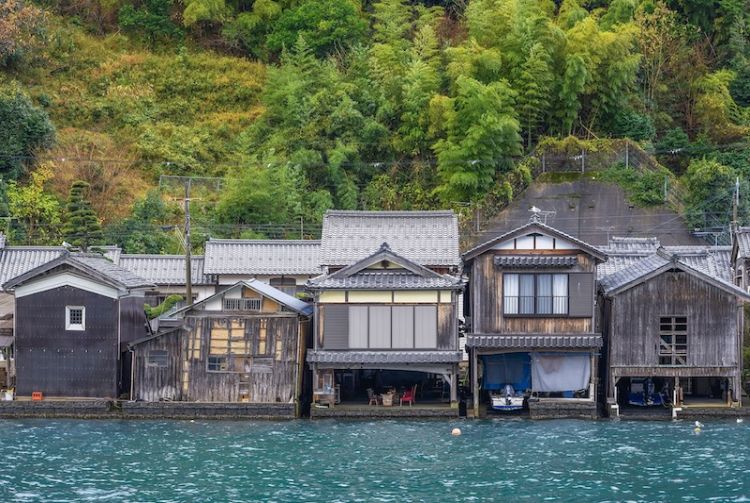
Woodland Kyoto
“Woodland Kyoto” includes rich forests, quiet rivers and vast woodlands, serving as an idyllic escape for nature enthusiasts. Encompassing the cities like Nantan, Kameoka, Kyotamba, Ayabe and Fukuchiyama, visitors can take in wonderful scenery and explore the surrounding natural beauty. Travelers looking to reconnect with nature can visit Nantan City's thatched-roof village of Miyama , or take a boat ride along the Hozu River in Kameoka, where they can enjoy the natural beauty of the Hozu River gorge and the thrill of river rafting. The Hozu River raft boarding area is located just ahead of the Torokko Kameoka Station. Hiking enthusiasts can explore the captivating Rurikei Valley in Nantan City, which features enchanting ravines, waterfalls and cliffs. The Moto Ise Naiku Shrine, also in the Fukuchiyama region, is said to have housed the divine mirror of the Shinto Goddess Amaterasu before moving around the country and finally settling at the Ise Jingu Shrine in Mie Prefecture, and provides another immersive experience in Woodland Kyoto.

©Kyoto Miyama Tourism Association
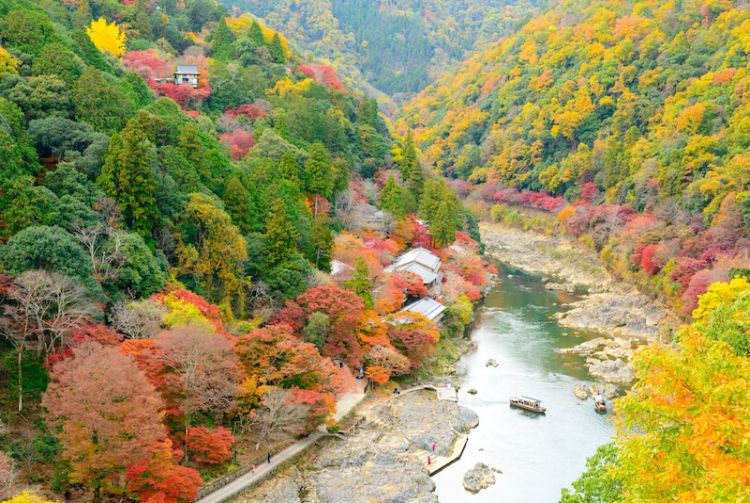
Kyoto Tea Country
Renowned for its tea production, southern Kyoto boasts numerous national treasures and scenic tea fields, making it a perfect destination for tea lovers. Uji City , home to Byodoin Temple and the Uji Bridge , was the location of many aristocratic vacation homes since ancient times. As a result, the culture and industry of the region developed in line with the tastes of the upper class. Visitors to Uji City can deepen their appreciation for all things matcha and green tea, from traditional matcha soba and “cha-dango” (a sweet dumpling flavored with matcha) to contemporary delights such as matcha ice cream and matcha beer. Some shops in the area offer visitors the chance to grind their own matcha and enjoy a small tea ceremony using the freshly ground powder. For visitors interested in visiting a green tea farm, Wazuka is home to several ideal locations. In addition to being able to partake in tea picking experiences depending on the season, visitors can learn about different types of tea and their agricultural production cycles.


Kyoto Otokuni Bamboo Groves
The Kyoto Otokuni Bamboo Grove area, spread across Muko City, Nagaokakyo City and Oyamazaki Town in western Kyoto, is known for its beautiful bamboo groves and production of high-quality bamboo shoots. Take-no-Michi (“The Bamboo Path”) in Muko City is a hidden gem that gives visitors an intimate experience amongst towering bamboo. Roughly five times the size of Arashiyama and spanning a total of 1.8 kilometers, Take-no-Michi's bamboo path is lined with eight different kinds of bamboo hedges. Here, visitors can enjoy a stroll through an enchanting bamboo forest without worrying about crowds.
There's certainly more to Kyoto Otokuni Bamboo Groves than just admiring the bamboo. Visitors can enjoy sweets or kaiseki cuisine featuring bamboo shoots, or try their hand at making traditional bamboo crafts like tea scoops and bamboo baskets.





























































